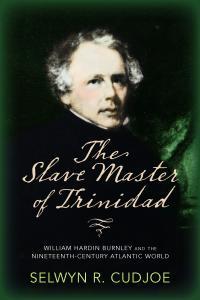Living and dying on a river bank
By Dr Selwyn R. Cudjoe
February 06, 2024
If you are travelling from Port of Spain to Arima and pass through Tacarigua and make a left turn onto Richard Street, you would be heading to the Northern Range. It will take you to a semi-urban community, Paradise Gardens, that sits at the base of that magnificent mountain. Sometimes its serenity feels like paradise as the soft, refreshing breezes that caress the community.
When you get into Paradise Gardens, if you take a left onto Paradise Circular Road and another left turn onto Highland Court Road, you will come upon a clump of bamboos that overlook the Tacarigua River.
There, beneath the bamboos, on a narrow stretch of land between the gentle-flowing river and its bank, you will see three hastily-built structures that were occupied by three former residents of the St Mary’s Children Home.
One of the occupiers of those structures, Leo Thompson, died on January 13 at the Eric Williams Medical Sciences Complex six days after he left his residence on the river bank where he lived most of his adult life. He died as he lived: a well loved and respected member of the Tacarigua community.
On Monday, January 20, he was churched and buried at the St Mary’s Anglican Church by parish priest Rev Maxwell Anderson and Rev Eric Thompson, Leo’s cousin and pastor at St Thomas Church in Chaguanas. They were also assisted by Michael Philip, a lay minister at St Mary’s and former resident of the children’s home.
Edward Hart, another noble son of that institution and former member of Parliament, spoke at the service on behalf of the “distrikers”, a term Tacarigua people use to describe themselves.
He queried in a plaintive voice: “Why he had to leave us so soon? He loved people and we loved him. Remember us always as loving you.”
In her eulogy, Cheryl-Ann Francique, a resident of Paradise Gardens who, with Leo’s sister Patricia Thompson, organised the funeral, said: “He was a household name, because he was a painter, the grocery delivery guy, and the watchman. You wanted mangoes, Call Leo. You wanted Banana leaves, call Leo. On mornings you would see him taking a read of the newspapers whilst walking his bike on his daily paper delivery route.”
She declaimed further: “Never disrespectful, he always referred to people as ‘Mr So and So, Ms So and So. He was kind-hearted. He never held a grudge, because we fell out many times over the years.”
Shabba (Curtis Glen Phillip), another former resident of the home and Leo’s friend, left the site where he helped to dig Leo’s grave and entered the church in his black garden boots, short pants and short-sleeved shirt. He went up the nave and offered his appreciation of his fallen companion.
He said: “Leo grow up in de home but he made himself a man. He also made Paradise Garden his home. Watching the people in his family [who attended the funeral] will always remain in my heart. The life he lived was an inspiration to me.”
In eloquence and humility, he spoke of the exemplary nature of Leo’s life. He ended with the acknowledgement: “He showed me how noble one’s life can be.”
The audience of about 200 listened in silence, dignity and sorrow to his words. They responded with a thunderous applause after he finished. It was an inspiration to all who heard him. Few expected an “ex-orphan home boy” to speak with such eloquence, passion, and grace in that subdued and holy setting.
After rendering his eulogy, Shabba returned to the burial site to cast the disturbed earth upon the coffin of his fallen comrade. He did so with the help of two other residents of the home, many of whom came to pay their respect to Leo.
Donna Reyes, a resident, had the highest praise for Leo. Without being blasphemous, she said: “Jesus walked among us but we didn’t know it. He was so humble. We seem to feel we need for so many material things but he lived simply and effortlessly. He had so much to give although he was so poor.”
Leo was buried at the side of Joshua Stanley’s grave, one of the subjects of my forthcoming biography, and about ten yards from the tombstone of William Eccles, who, together with William Frederick Burnley, son of William Hardin Burnley, built the St Mary’s Children Home in 1857.
It may have been poetic justice, but the boy who lived on the river bank now rests side by side with one of the founders of the St Mary’s Children Home and one of the most distinguished black lay readers of the Caribbean. Such truths are often stranger than fiction.
—Prof Cudjoe's e-mail address is scudjoe@wellesley.edu. He can be reached @ProfessorCudjoe.
Share your views here...

The Slave Master of Trinidad by Dr. Selwyn R. Cudjoe
|

